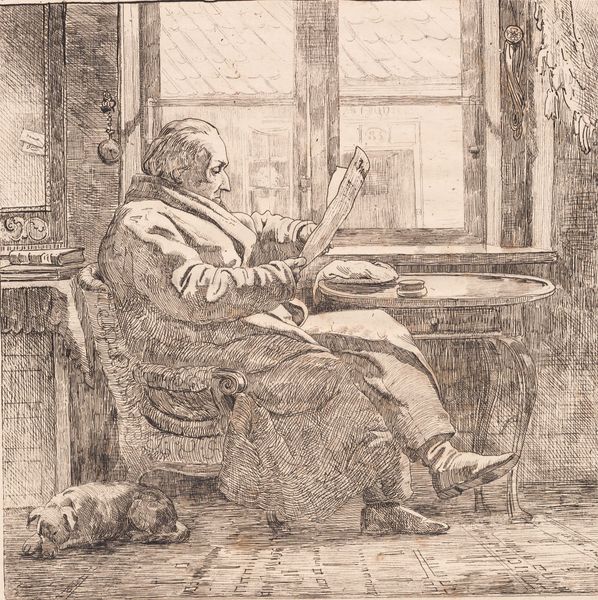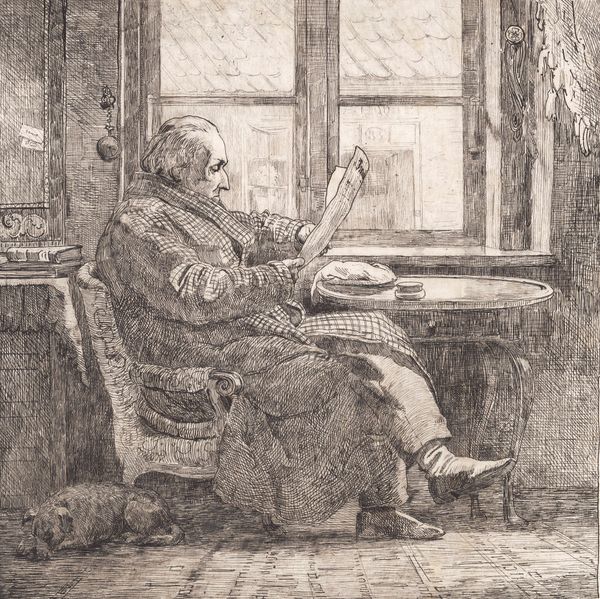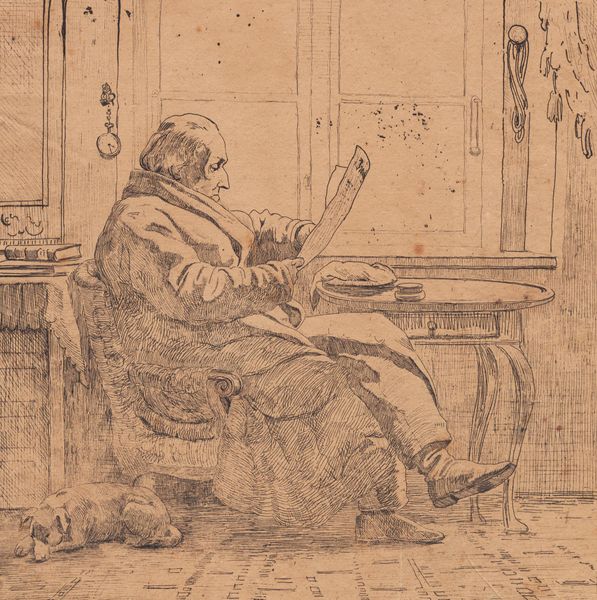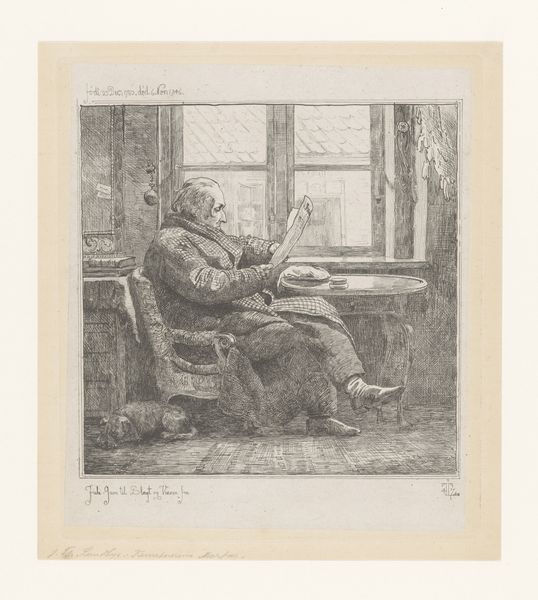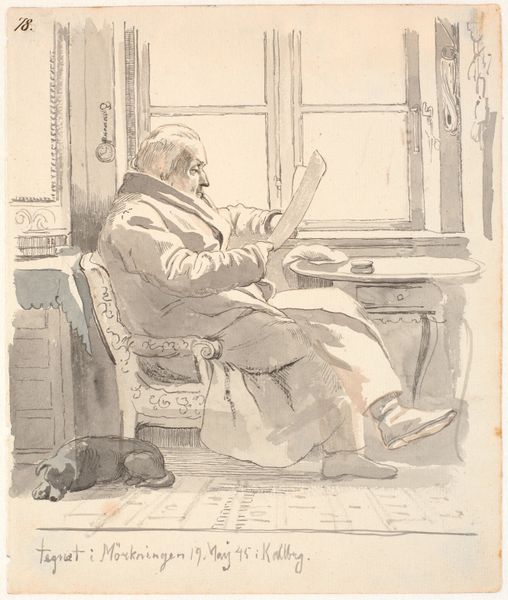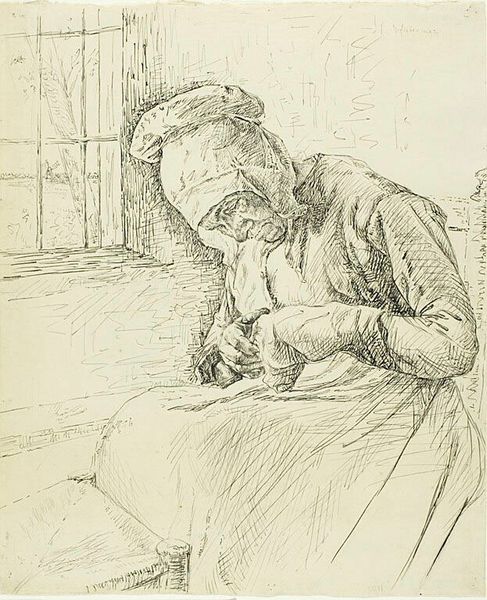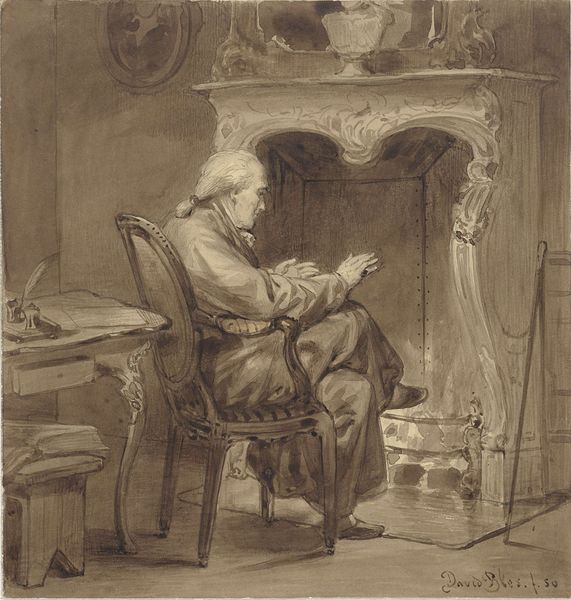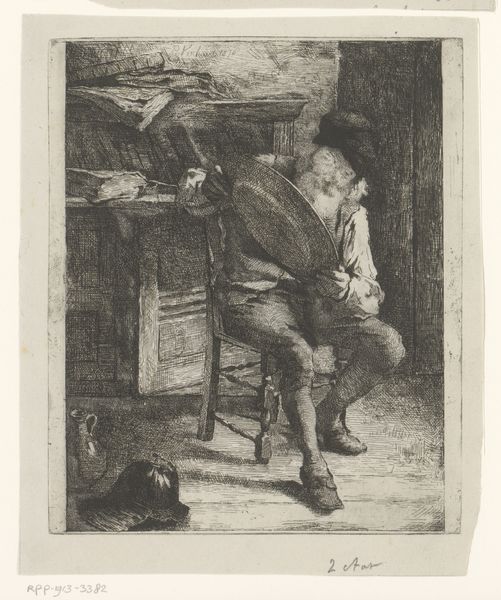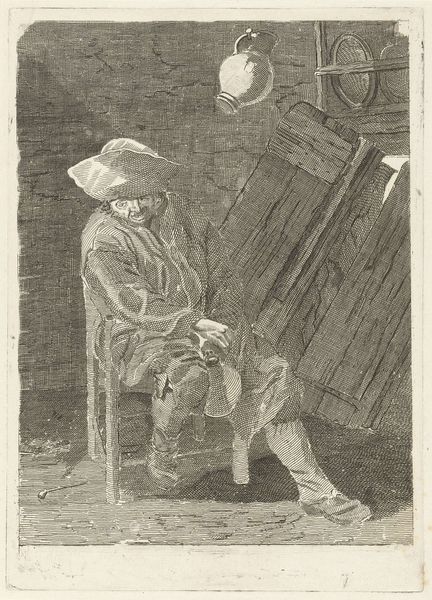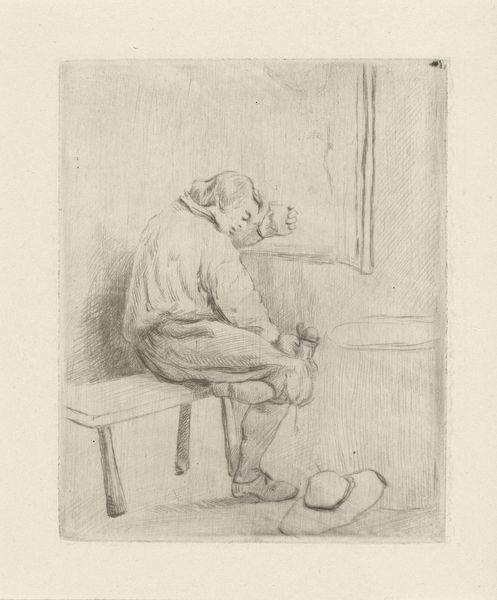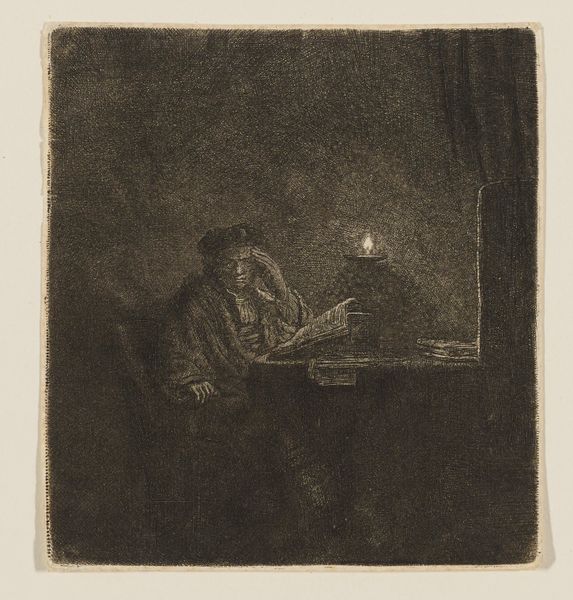
print, engraving
#
portrait
# print
#
romanticism
#
genre-painting
#
engraving
Dimensions: 239 mm (height) x 205 mm (width) (plademaal)
Editor: Here we have Johan Thomas Lundbye’s 1847 engraving, "Justitsråd Emanuel Bonnevie." There's such a strong sense of domesticity, a kind of quiet intimacy. What stands out to you in this piece? Curator: The seeming ordinariness of this image belies a deeper engagement with power, class, and gender roles in 19th-century Denmark. Look at the composition—the Judge, the trappings of wealth, even the placid dog at his feet. This isn't just a portrait; it’s a carefully constructed image of bourgeois stability, complicit within existing social structures. Do you see anything that might challenge this initial interpretation? Editor: I hadn't considered that, but now that you mention it, the judge seems almost weighed down, his gaze seems focused on something we can't see beyond the page. Is the very act of him reading significant? Curator: Absolutely. Literacy was a privilege, a signifier of access and education that was firmly divided along lines of class. Reading material at that time was often censored to perpetuate particular narratives, to indoctrinate society, a point we can also make of this portrait and his position of power in this interior space. His attire, indoor life, even the presence of that dog reinforces his separation from the world of physical labor. It normalizes privilege, what do you think? Editor: I agree! It's unsettling to see this seemingly peaceful scene recast as a tableau of social control. It makes me question who gets represented and how in art and in culture. Curator: Precisely. And that’s where art history meets contemporary theory. These are not just images; they are reflections of and active participants in systems of power. Thinking about the broader intersectional narratives concerning identity allows a work to offer social critique.
Comments
No comments
Be the first to comment and join the conversation on the ultimate creative platform.
